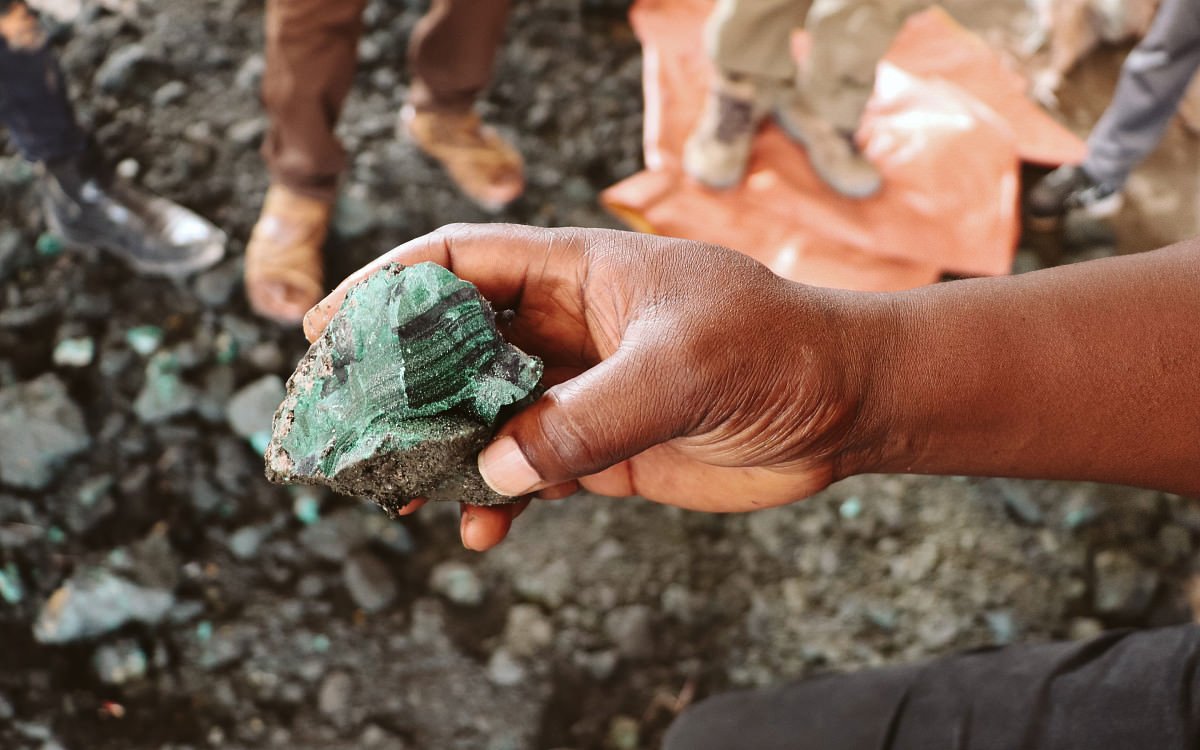Cobalt Mining in Congo: Environmental Health, Safety, & Human Rights
Photography by Junior Kahhah/AFP via Getty Images.
We are attached to the hip with technology. It seems to be inescapable. Almost everyone around us has a smartphone, almost all of our professional lives require us to use laptops, and almost all of our transportation relies on engines. All of these things have a common denominator: cobalt.
For starters, cobalt is a chemical element with a silver-white and bluish coloration, used to produce lithium-ion batteries that supply energy to electronic devices/vehicles. The Democratic Republic of the Congo (DRC), China, Canada, and Russia are the world’s leading producers of mined cobalt. The largest producer of refined cobalt, however, was China, which imported vast additional amounts of cobalt mineral resources from the DRC.
While there has been a recent global shift to prioritize renewable energy and electric vehicles, the production of these lithium-ion batteries warrants careful consideration, especially since there are serious, detrimental humanitarian concerns with the mining industry.
Genocide in the DRC
Researchers, from Harvard's T.H. Chan School of Public Health, have been investigating modern-day slavery. Scientists note that the mining industry in the DRC has ruined the land by cutting down millions of trees, negatively impacting air quality around mines, and contaminating water with toxic substances. Moreover, cobalt is toxic to touch and breathe, causing negative healthcare outcomes. Congolese people do not have alternatives to make a living. The mining industry has taken over, forcing people to live and work in these hazardous conditions.
Mining & Exploitative Work Practices
Cobalt. Photography by The Impact Facility
A 2023 report details how multinational companies expand mining operations, which result in people being forced from their homes and farmland. Eastern Congo has been taken over by industrial and artisanal mines. Due to this, forests, highlands, and lakeshores of the Eastern DRC are now guarded by armed militias that enslave hundreds of thousands of men, women, and children.
Within the U.S. Department of Labor, the “Combatting Child Labor in the Democratic Republic of the Congo’s Cobalt Industry” (COTECCO) project exists to address child labor in the DRC’s cobalt supply chain. The COTECCO efforts include raising awareness of the challenges and opportunities to combat child labor; increasing governmental enforcement of child labor prevention; improving the private sector’s monitoring and remediation of child labor violations in the cobalt supply chain; and supporting efforts to enhance implementation and enforcement of laws, policies, and action plans that address child labor. While around 28 companies have adopted monitoring and remediation efforts to combat child labor, the cobalt mining industry is still unregulated on a larger scale, with at least 40,000 children still working in extremely dangerous conditions.
The National Institute for Occupational Safety and Health (NIOSH) and the Centers for Disease Control and Prevention (CDC) note that exposure to cobalt is harmful to the eyes, skin, heart, and lungs. Cobalt mining has been connected with several other health and social issues, including occupational accidents, long working hours, corruption, and the displacement of indigenous people. Despite the health concerns, Congo's cobalt miners lack basic protective gear such as face masks, proper work clothes, and gloves. Some mining workers reported regular coughing or lung difficulties. Women complained about the physical demands of the job, which included lifting 110-pound sacks of cobalt ore. Furthermore, miners report that unsupported mining tunnels frequently collapse, resulting in injury or even death.
Mining is one of the few fairly paying occupations available in Congo. Poverty drives this desperate need to stay in this industry. Schools require money, as does food, therefore people need their children to work in these mines. The thousands of miners who work in tunnels to find cobalt in the country do so because they live in one of the world's poorest countries, and cobalt is highly valued in tech-centric western countries.
Environmental Health Impacts
“A man digs through some mine waste searching for leftover cobalt.” —Council on Foreign Relations. Photography by Federico Scoppa/AFP/Getty Images
Besides the deleterious impact cobalt exposure has to human health, cobalt mining's toxic byproducts devastate landscapes, pollute water, and contaminate agriculture. High cobalt concentrations result in crop and worm death, both of which are necessary for soil fertility. Another negative environmental impact of cobalt mining in Congo is the foggy air around the mines, which is full of harmful dust and grit that negatively impacts lung health. Studies have found that when a parent worked in a cobalt mine, the incidence of birth malformations increased significantly, which has been related to high amounts of toxic contamination created by cobalt extraction.
How can we take action?
Speak up: raise awareness of this issue within your communities, and further your own research regarding the atrocities happening in the DRC. Hold tech companies accountable by uncovering their unethical practices.
Sign petitions and donate: there are several organizations working to combat human justice violations by providing aid to the people of DRC who work in the cobalt mining industry. Below are a few petitions/donation links you can contribute to today!
Donations:
Further reading:



